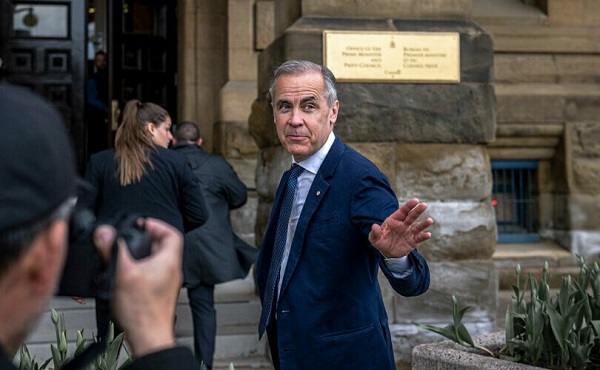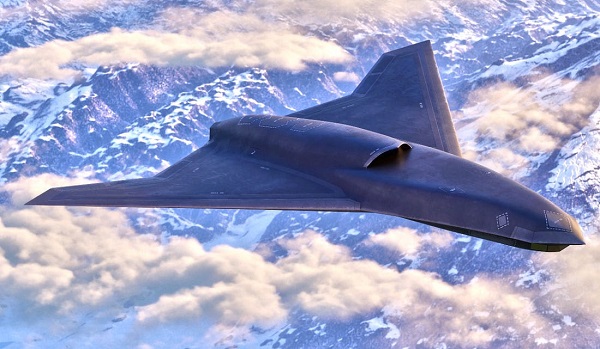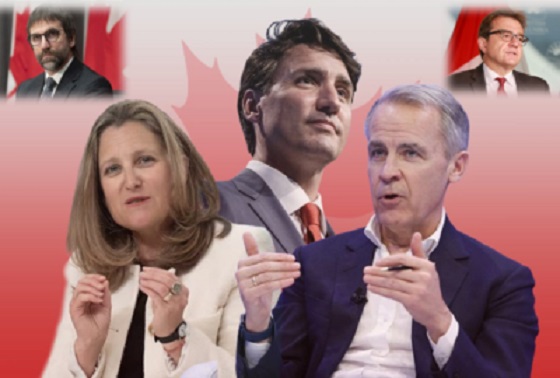National
Canada Recognizes Palestine, Allows Taiwan to Be Sidelined: A Tale of Two Standards in Ottawa’s Foreign Policy

Carney’s recognition of Palestine contrasts with silence on Taiwan’s inclusion at ICAO, exposing a foreign policy shaped by diaspora politics and Beijing’s leverage.
Taipei’s top diplomats in Ottawa — backed by two Parliamentarians — warned that Taiwan’s exclusion from the United Nations’ International Civil Aviation Organization undermines global safety standards and rewards Beijing’s political bullying, despite the island’s role as a major aviation hub.
The appeal, ironically, came a day after Prime Minister Mark Carney announced Ottawa’s recognition, ahead of a UN assembly, of an ill-defined Palestinian state — a designation made without defined borders, a recognized government, or resolution of Hamas’s ongoing hostage crisis. Conservative MP Michelle Lantsman equated the move to succumbing to pressure from Islamic groups in Canada and rewarding Hamas terrorism. By contrast, in Ottawa today, lawmakers Michael Cooper and Judy Sgro raised Taiwan’s case for inclusion in ICAO, the United Nations’ aviation safety body, from a government with arguably far stronger credentials for statehood than Palestine.
Last week in the House of Commons, ahead of the ICAO Assembly underway in Montreal this week, Cooper accused the UN agency of “bending to Beijing’s bullying,” warning that shutting out the world’s eleventh-largest aviation market “creates a dangerous gap that undermines global aviation safety.” Sgro, a Liberal MP and co-chair of the Canada–Taiwan Parliamentary Friendship Group, added that Taiwan manages the busy and strategically vital Taipei Flight Information Region, and its absence “contradicts the spirit of the Chicago Convention” that created ICAO.
In a press gallery speech today, Taiwan’s ambassador to Canada, Harry Tseng, warned that Beijing’s escalating military drills and unilateral aviation maneuvers are turning skies over the Taiwan Strait into a global security hazard. He recalled August 2022, when China launched 11 ballistic missiles around Taiwan, four of them flying directly over the island, and declared seven temporary danger zones that disrupted more than a dozen international routes. In just four days, international flights through the Taipei Flight Information Region plunged by 90 percent, Tseng said, forcing hundreds of planes to reroute at enormous cost. “We must not allow political maneuvers to take precedence over aviation safety,” he told reporters.
Tseng pointed to an ongoing pattern of unilateral Chinese actions, from activating new flight paths without consultation to staging large-scale military drills that, he said, “deliberately disregard” Taiwan’s recognized aviation authority.
Conservative MP Michael Cooper called the United Nations exclusion of Taiwan from ICAO “nothing short of reckless,” making “a mockery of ICAO’s mission.”
Cooper said that as the host country for the ICAO assembly, Canada carries an added responsibility to support Taiwan, and he criticized Prime Minister Mark Carney’s silence, arguing Carney is “placating Beijing’s dictatorship.”
“It’s disappointing that we have seen silence on the part of the government, and I think over the past number of years, we have seen a policy of the Government of Canada that has too often bended to Beijing,” Cooper said.
The exclusion at ICAO mirrors Taiwan’s experience at the World Health Organization, where its government argued that being locked out during the early days of COVID-19 led to significant harms. WHO officials relied on faulty reports from Beijing and delayed confirmation of the outbreak’s origins in Wuhan, leaving Taipei cut off from critical information despite its own early warnings. In both cases, Taiwan’s absence reflects structural limits imposed by the United Nations after 1971, when the General Assembly transferred China’s seat to the People’s Republic of China. As a UN specialized agency headquartered in Montreal, ICAO fell in line with UN membership rules, giving Beijing enduring leverage to bar Taiwan.
There have been moments of exception. In 2013, ICAO Council President Roberto Kobeh González extended a personal invitation to Taiwan’s Civil Aeronautics Administration to attend the 38th Assembly as “Chinese Taipei,” a modest opening welcomed by the United States and European Union. But that door closed in 2016, after the election of President Tsai Ing-wen. Without Beijing’s approval, Taiwan was denied entry to the 39th Assembly, a reversal widely understood as punishment for Taipei’s refusal to endorse the so-called 1992 Consensus on “One China.”
The tensions grew in 2020, when ICAO officials blocked North American analysts and congressional staffers on Twitter who mentioned Taiwan’s exclusion. The episode, dubbed “Twittergate,” drew condemnation from the U.S. State Department and became a symbol of Beijing’s influence over UN agencies.
The pattern continues today. In Washington last week, Senate Commerce Chair Ted Cruz called on ICAO to recognize Taiwan at the Assembly, warning that failure to do so “emboldens China and harms” global standards.
The stakes in Ottawa are immediate: ICAO delegates are meeting just down the highway in Montreal, with China seated as a full member while Taiwan remains excluded.
After making his remarks, Ambassador Tseng told The Bureau that his office will travel to Montreal, where it plans to meet with representatives from about 20 nations outside ICAO’s official proceedings to press Taipei’s case for inclusion.
G7 statements in recent years have consistently endorsed Taiwan’s “meaningful participation” in international institutions, from WHO to ICAO. Yet Ottawa’s decision to hastily recognize Palestine while offering only tepid support for Taiwan’s international status exposes a troubling inconsistency in Canadian foreign policy — driven, plausibly, by foreign pressure and the calculus of diaspora vote banks.
The Bureau is a reader-supported publication.
To receive new posts and support my work, consider becoming a free or paid subscriber.
armed forces
Secretive Lockheed Martin Skunk Works reveals latest high-tech military drone

 THE MAKICHUK REPORT
THE MAKICHUK REPORT
Unmanned Vectis to ride shotgun with next-gen fighters
When Lockheed Martin’s super secret Skunk Works© advanced development arm unveils a new project, the aviation world stops and listens.
As always, it is very hush-hush, and, quite often, groundbreaking.
This week’s announcement didn’t disappoint.
It’s called “Vectis” — a stealthy autonomous drone that Lockheed intends to fly by the end of 2027.
As with most Skunk Works projects, officials declined to comment on certain aspects of the aircraft’s design, such as its engine or top speed, though it was noted that Lockheed’s analysis “doesn’t point toward supersonic [speeds]” as a requirement.
What do we know about it, aside from it’s very cool, futuristic design?
The first Vectis prototype is currently “in progress,” and is envisioned as a large “Category 5” reusable drone designed to be customizable to match shifts in the threat environment, said OJ Sanchez, Skunk Works’s vice president and general manager.
“Vectis provides best-in-class survivability at the CCA [Collaborative Combat Aircraft] price point,” Sanchez told reporters ahead of the Air Force Association’s Air Space and Cyber conference in Washington, D.C. “Prototype parts are ordered, the team is in work, and we intend to fly in the next two years.”
According to Breaking Defense, Lockheed sees the range, endurance and flexibility of Vectis’s design as key to its appeal.
It is being developed for the US and international markets based on feedback from multiple customers about the future battlefield.
One has to only look at the Russia-Ukraine conflict, to see that things have changed.
Vectis can carry out mission sets ranging from air-to-air, air-to-ground and ISR, and has an open systems architecture allowing it to interface with platforms and mission systems not built by Lockheed Martin, Breaking Defense, reported.
Certain aspects of the drone — such as which payloads it can carry, or whether it is optimized for regular operations or used less frequently on deployments — can be fine-tuned to meet a customer’s specific requirements.
For instance, “we will have built into it the ability for it to be a daily flyer, reliably work alongside its crew teammates, to be able to integrate into operations for training, as well as for deployment,” Sanchez said.
“At the same time, if the requirement is ease of storage and ease of assembly, it’s absolutely built into the design. … That’s where we’ll work closely to listen with any individual customers and go from there on their operations choice, but the flexibility is built in.”
With the lessons of Ukraine in mind, Vectis is designed to be maintainable in a deployed environment, with a simple design made of “and durable, reliable materials” and easy access to the aircraft’s internal systems if repairs need to be made.
While it has not flown, Lockheed has conducted operational analysis and simulations that paired the drone with the F-22 and F-35, with Sanchez noting that its low-observable signature and communications gear are “compatible” with fifth- and sixth-generation aircraft.
It was also informed by previous experience designing tailless aircraft like the X-44 MANTA, Lockheed’s sixth-generation fighter prototype for the Air Force’s Next Generational Air Dominance program, Sanchez said.
“We’re building in that kind of autonomy, that flexible autonomy, if you will, so that we can work with more countries, more partners, to really listen to what their needs are,” he said.
“That flexibility has been demonstrated through multiple demonstrations. Now we’ll go out and build it, and we’ll work to prove in the open air.”
In the U.S. military’s parlance, Group 5 uncrewed aerial systems are the largest and most capable, covering anything pilotless with a maximum takeoff weight of 1,320 pounds or more, and that can fly at altitudes of 18,000 feet or higher.
When asked, Sanchez declined to offer any hard dimensions or other specifications for Vectis. He did say it was smaller than a Lockheed Martin F-16 fighter, but larger than one of the company’s Common Multi-Mission Truck (CMMT, pronounced ‘comet’) missile-like drones, which is a very broad size range.
According to experts at TWZ.com, renderings of Vectis from Skunk Works show a tailless drone with a lambda wing planform and a top-mounted air intake.
There is a pronounced chine line around the forward end of the fuselage and a shovel-like shape to the nose, as well as various conformal antennas and/or sensor apertures, all of which are indicative of low-observable (stealthy) design considerations.
A short promotional video also includes a cutaway view showing an S-shaped duct behind the air intake and exhaust shrouding, features that offer further radar cross-section and infrared signature reducing benefits.
Vectis’ core planform is interestingly reminiscent, in some broad strokes, of a rendering of a stealthy aerial refueling tanker concept Skunk Works first showed publicly last year.
That aircraft had a much larger design, in line with its intended mission, with large clipped wings that had some lambda-wing attributes, as well as small outwardly-canted twin vertical tails.
There has been something of an uptick in recent years in new crewed and uncrewed tactical aircraft designs with lambda or at least lambda-like planforms.
This includes one of the several air combat drone designs that emerged around a massive military parade in China earlier this month, as well as one of the two Chinese next-generation crewed combat jets that broke cover in December 2024.
Vectis also has “endurance ranges compatible with Indo-Pacific, European, and CENTCOM [U.S. Central Command] theaters,” according to a Lockheed Martin press release.
What munitions and other payloads Vectis might be able to carry is unclear. Skunk Works’ Sanchez mentioned “reusable or flexible payloads,” but did not elaborate.
The promotional video shows a vignette in which the drones, operating together with an F-22, use unspecified sensors to spot and track aerial threats before being ordered to fire air-to-air missiles, presumably from internal bays, at those targets.
Electronic warfare suites and signal relay packages might also be among the payload options for Vectis drones.
Sanchez did not provide any hard cost metrics for Vectis. The Air Force has said in the past that it is aiming for a unit cost roughly in the US$20 million range for drones being developed under the first phase, or Increment 1, of its CCA program.
In discussing how Vectis could be adaptable to multiple U.S. and foreign operator requirements, Sanchez also spoke in more detail about the drone’s current dependence on traditional runways, as well as its ability to operate from more austere locations.
“Our analysis aligns with the U.S. Air Force, that runway accessibility is incredibly important in every theatre, particularly in INDOPACOM [the U.S. Indo-Pacific Command area of responsibility]. So we’re very intentional about the flexibility that this system would enable in the theaters of interest,” Sanchez explained.
“And so the amount of runways that will be available, the amount of flexibility to implement, whether it be an Agile Combat Employment approach, or a hub and spoke for other countries, depending on how it is, Vectis will be very capable in those spaces.”
Exactly how Skunk Works envisions the Vectis will handle counter-drone weapons, such as Israel’s Iron Dome, Iron Beam, or David’s Sling, remains uncertain.
THE MAKICHUK REPORT is free today.
You can tell THE MAKICHUK REPORT that their writing is valuable by pledging a future subscription.
You won’t be charged unless they enable payments.
Business
Canadian gov’t spending on DEI programs exceeds $1 billion since 2016

From LifeSiteNews
Some departments failed to provide clear descriptions of how the taxpayer funds were used. For example, Prairies Economic Development Canada spent $190.1 million on projects related to diversity, equity and inclusion ventures but could not provide details.
Federal diversity, equity and inclusion programs have cost Canadian taxpayers more than $1 billion since 2016.
According to information published September 18 by Blacklock’s Reporter, diversity, equity and inclusion (DEI) government grants have totaled $1.049 billion since 2016, including grants for “cultural vegetables.”
A $25 million grant, one of the largest individual grants, was given to the Canadian Gay and Lesbian Chamber of Commerce to “strengthen Canada’s entrepreneurship ecosystem to be more accessible to LGBTQ small businesses.”
The government payouts were distributed among 29 departments, ranging from military to agricultural projects.
The Department of Agriculture spent $90,649 for “harvesting, processing and storage of cultural vegetables to strengthen food security in equity-deserving Black communities” in Ontario.
Some departments failed to provide clear descriptions of how the taxpayer funds were used. For example, Prairies Economic Development Canada spent $190.1 million on projects related to diversity, equity and inclusion ventures but could not provide details.
“PrairiesCan conducted a search in our grants and contributions management system using the keywords ‘equity,’ ‘diversity’ and ‘inclusion,’” the Inquiry said. “Certain projects were included where diversity, equity and inclusion were referenced but may not be the main focus of the project.”
DEI projects are presented as efforts by organizations to promote fair treatment, representation, and access to opportunities for people from varied backgrounds. However, the projects are often little more than LGBT propaganda campaigns funded by the Liberal government.
As LifeSiteNews reported, the University of British Columbia Vancouver campus posted an opening for a research chair position that essentially barred non-homosexual white men from applying for the job.
Additionally, during his short time in office, Liberal Prime Minister Mark Carney has already shown Canadians that he is a staunch supporter of the LGBT agenda after he spent over $2 million in taxpayer funding on LGBT groups during his first week in office.
Canadians have repeatedly appealed to Liberals to end pro-LGBT DEI mandates, particularly within the education system.
As LifeSiteNews previously reported, in June 2024, 40 Canadian university professors appealed to the Liberal government to abandon DEI initiatives in universities, arguing they are both ineffective and harmful to Canadians.
-

 Business1 day ago
Business1 day agoCarney’s ‘major projects’ list no cause for celebration
-

 Business1 day ago
Business1 day agoGlobal elites insisting on digital currency to phase out cash
-

 Business1 day ago
Business1 day agoRed tape is killing Canadian housing affordability
-

 Health1 day ago
Health1 day agoMAiD should not be a response to depression
-

 Artificial Intelligence1 day ago
Artificial Intelligence1 day agoUK Police Chief Hails Facial Recognition, Outlines Drone and AI Policing Plans
-

 Business1 day ago
Business1 day agoOttawa’s so-called ‘Clean Fuel Standards’ cause more harm than good
-

 Business1 day ago
Business1 day agoThe Truth Is Buried Under Sechelt’s Unproven Graves
-

 International1 day ago
International1 day agoFrance records more deaths than births for the first time in 80 years










